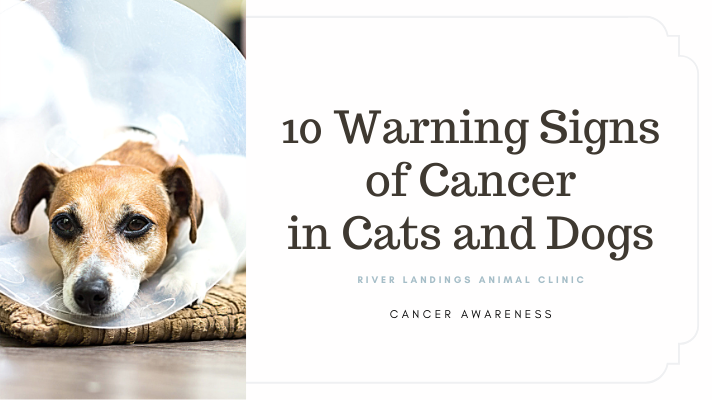If cancer is detected early it can be treated more effectively, so it’s important to check your dogs & cats regularly for these 10 warning signs of cancer as recommended by the Veterinary Cancer Society.
If your dog or cat has any of these early warning signs of cancer, you should take them to your veterinarian as soon as possible for a more thorough and complete examination. In addition, you should keep your pet away from environmental toxins such as lawn fertilizers and surface & rug cleaners that have warning labels relative to children and pets, due to a potential link between environmental toxins and cancer.
01 / Swollen lymph nodes
The lymph nodes are glands that are located throughout the body. They are most easily detected behind the jaw or behind the knee. When these lymph nodes are enlarged, it can suggest a common form of cancer called lymphoma. A biopsy or cytology of the enlarged lymph nodes can aid in the diagnosis.
02 / Enlarging (or changing) lump
Any lump on a pet that is rapidly growing or changing in texture or shape should have a biopsy.
03 / Abdominal distension
When the stomach becomes rapidly enlarged, this may suggest a mass or tumor in the abdomen, or it may indicate some bleeding that is occurring in this area. A radiograph or an ultrasound of the abdomen can aid in diagnosing.
04 / Chronic weight loss
When a pet is losing weight and you have not put your pet on a diet, you should have your pet checked. This sign is not a definitive diagnostic for cancer but can indicate that something is wrong.
05 / Chronic vomiting or diarrhea
Vomiting or diarrhea should always prompt further investigation. Often tumors of the gastrointestinal tract can cause chronic vomiting and/or diarrhea. Radiographs, ultrasound examinations, and endoscopy are useful diagnostic tools when these symptoms present themselves.
06 / Oral Odor
Oral tumors can occur in pets and can cause a pet to change its food preference (i.e. from hard to soft foods) or cause a pet to change the manner in which they chew their food. Many times a foul odor can be detected in pets with oral tumors. A thorough oral examination with radiographs or CT scans, necessitating sedation, is often necessary to determine the cause of the problem.
07 / Unexplainable bleeding
Although bleeding disorders do occur in pets, they usually are discovered while pets are young. If unexplained bleeding starts when a pet is old, a thorough search by your veterinarian should be undertaken.
08 / Cough
There are many causes of a cough in dogs and cats. However, dry, non-productive coughing in an older pet should prompt chest radiographs to be taken, as this type of cough is the most common sign of lung cancer.
09 / Lameness
Unexplained lameness, especially in large or giant breed dogs, is a very common sign of bone cancer. Radiographs of the affected area are useful for detecting cancer of the bone.
10 / Straining to urinate
Straining to urinate and blood in the urine usually indicate a common urinary tract infection; if the straining and bleeding are not rapidly controlled with antibiotics or are recurrent, cancer of the bladder may be the underlying cause. Cystoscopy or other techniques that allow a veterinarian to take a biopsy of the bladder are useful and sometimes necessary to establish a definitive diagnosis in these cases.
Hear From Us Again
Don't forget to subscribe to our email newsletter for more recipes, articles, and clinic updates delivered to your inbox (here). Or, you can keep up to date by liking and following our Facebook page (here).
Related: We have more information under our cat health + dog health categories.











